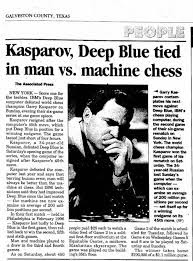Shatranj (Arabic: شطرنج, from Middle Persian chatrang) is an old form of chess, as played in the Sasanian Empire around 600AD.
Shatranj was played on an 8x8 board and featured 16 pieces on each side, similar to today's chess: the soldier (pawn), the horse (knight), the elephant (a weaker bishop), the chariot (rook), the counselor (a much weaker queen), and the shah (king).
The game ended with checkmate, or if all the pieces of one army (except the king) were captured.
Its origins are in the Indian game of chaturaṅga. Modern chess gradually developed from this game, as it was introduced to the western world via contacts in Muslim Andalusia (modern Spain) and in Sicily in the 10th century.
Two shatranj players in a detail from a Persian miniature painting of Bayasanghori Shahname made in 1430
Rules
The initial setup in shatranj was essentially the same as in modern chess; however, the position of the white shah (king), on the right or left side was not fixed. Either the arrangement as in modern chess or as shown in the diagram were possible. In either case, the white and black shāh would be on the same file (but not always in modern India). The game was played with these pieces:
- Shāh ("king") moves like the king in chess.
- Fers ("counselor"; also spelled ferz; Arabic firz, from Persian فرزين farzīn; also called Wazir) moves exactly one square diagonally, which makes it a rather weak piece. renamed Queen in Europe
- Rukh ("chariot"; from Persian رخ rokh) moves like the rook in chess.
- Pīl, alfil, aufin, and similar ("elephant"; from Persian پيل pīl; al- is the Arabic for "the") moves exactly two squares diagonally, jumping over the square between. Each pīl could reach only one-eighth of the squares on the board, and because their circuits were disjoint, they could never capture one another.
- Asb (current meaning of "horse" in Persian, from old Persian Asp (اسپ)), moves like the knight in chess.
- Sarbaz ("soldier"; also called piyādeh (پیاده "infantryman") in Persian and adopted later to Baidaq (بيدق) in Arabic (a new singular extracted by treating the Persian form as an Arabic broken plural), moves and captures like the pawns in chess, but not moving two squares on the first move. When they reach the eighth rank, they are promoted, but only to Fers.
There were also other differences compared to modern chess: Castling was not allowed (it was invented much later). Stalemating the opposing king resulted in a win for the player delivering stalemate. Capturing all one's opponent's pieces apart from the king (baring the king) was a win, unless the opponent could capture the last piece on his next move, which was considered a draw in most places in the Islamic world (except for Medina, where it was a win).
We notice that the possible movements of the main shatranj pieces, excluding that of the king and pawn, are complementary to one another, occupying, without any omission or redundancy, all available squares with regards to a central position inside a 5x5 grid.
A great demonstration of how to play Shatranj can be viewed on Ancient Chess



















